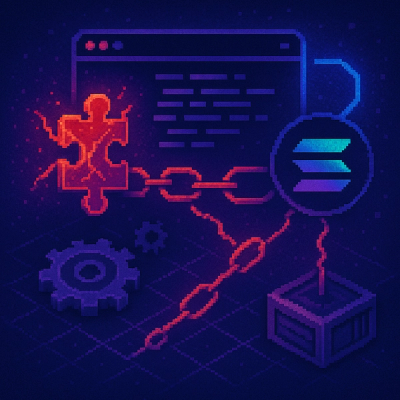
Security News
Scaling Socket from Zero to 10,000+ Organizations
Socket CEO Feross Aboukhadijeh shares lessons from scaling a developer security startup to 10,000+ organizations in this founder interview.
dreadpiratepj-poolparty
Advanced tools
= PoolParty
http://poolpartyrb.com Ari Lerner CitrusByte http://blog.citrusbyte.com
== DESCRIPTION:
PoolParty (http://poolpartyrb.com), Ari Lerner (http://blog.xnot.org, http://blog.citrusbyte.com) - PoolParty is a framework for maintaining and running auto-scalable applications on Amazon's EC2 cloud. Run entire applications using the EC2 cluster and the unlimited S3 disk. More details to be listed at http://poolpartyrb.com.
== Basics
PoolParty is written with the intention of being as application-agnostic as possible. It installs only the basic required software to glue the cloud together on the instances as listed below.
PoolParty is easily configuration. In fact, it makes little assumptions about your development environment and allows several options on how to begin configuring the cloud.
= Development setup
=== IN THE ENVIRONMENT
There are 5 values that PoolParty reads from the environment, you can set these basic environment variables and leave the rest to the PoolParty defaults. Those values are:
ENV["ACCESS_KEY"] => AWS access key ENV["SECRET_ACCESS_KEY"] => AWS secret access key ENV["CONFIG_FILE"] => Location of your config yaml file (optional) ENV["EC2_HOME"] => EC2 home directory (defaults to ~/.ec2) ENV["KEYPAIR_NAME"] => The keypair used to launch instances
The structure assumed for the keypair is EC2_HOME/id_rsa-
=== IN A CONFIG FILE
PoolParty assumes your config directory is set in config/config.yml. However, you can set this in your environment variables and it will read the config file from the environment variable
=== WITH A RAKE TASK
PoolParty comes with a rake task that can setup your environment for you. Set the environment variables above and run
rake dev:setup
This will write a .<KEYPAIR_NAME>_pool_keys into your home directory. Then you can just run
source ~/.<KEYPAIR_NAME>_pool_keys
and your environment will be all setup for you everytime you want to work on the cloud
= Basics
PoolParty can work in two ways to load balance it's traffic. It can either do server-side or client-side load-balancing. Since every instance load balances itself, you can either set the client to grab an instance and send it to that using client-side load balancing (with a js library). Alternatively, you can set the master in dns and reference it when referring to the application.
Since PoolParty makes no assumptions as to what you will be hosting on the application, the world is your oyster when running a cloud. You can set each instance to register with a dynDNS service so that your application has multiple points of entry and can run load-balanced on the fly.
Every instance will auto-mount the s3 bucket set in the config file (if it is set up) into the /data folder of the instance. This gives each instance access to the same data regardless of the instance. It uses s3fuse and caching through s3fuse in the /tmp directory to work as fast as possible on the local instances.
The instances all are loaded with the following software:
When an instance is started or brought down, the master is responsible for reloading every instance with the new data on each instance. If the master goes down, the next in succession will take over as the master (using heartbeat) and it will reconfigure the cloud, setting itself as the master and take over the maintenance of the cloud.
Your cloud is never guaranteed to be maintained, but with more than 1 instance unless you have more than 1 instance up
Each instance has a /etc/hosts file that has each node listed as the node name listed in the cloud:list (rake task).
= CloudSpeak - Communicating to your cloud(s) Binaries! Included in PoolParty are two binaries to communicate back with your clouds. Those are:
The cloud can be maintained entirely through rake tasks, although there are a few front-ends being developed (one in cocoa).
It is simple to include these tasks in your Rakefile. Just add the following lines:
require "poolparty" PoolParty.include_cloud_tasks # or PoolParty.tasks or PoolParty.include_tasks
All the cloud rake tasks are in the cloud namespace and can be viewed with:
rake -T cloud
The instance rake tasks are in the instance namespace and can be listed with:
rake -T instance
For more help, check http://poolpartyrb.com
== REQUIREMENTS:
== INSTALL:
gem install poolparty
== ROADMAP
== THANKS
Ron Evans, http://deadprogrammersociety.blogspot.com/ for his enthusiasm Tim Goh, http://citrusbyte.com for sanity checks and thoughts Daniel Fischer, http://citrusbyte.com for initial site design
== LICENSE:
(The MIT License)
Copyright (c) 2008 Ari Lerner. CitrusByte
Permission is hereby granted, free of charge, to any person obtaining a copy of this software and associated documentation files (the 'Software'), to deal in the Software without restriction, including without limitation the rights to use, copy, modify, merge, publish, distribute, sublicense, and/or sell copies of the Software, and to permit persons to whom the Software is furnished to do so, subject to the following conditions:
The above copyright notice and this permission notice shall be included in all copies or substantial portions of the Software.
THE SOFTWARE IS PROVIDED 'AS IS', WITHOUT WARRANTY OF ANY KIND, EXPRESS OR IMPLIED, INCLUDING BUT NOT LIMITED TO THE WARRANTIES OF MERCHANTABILITY, FITNESS FOR A PARTICULAR PURPOSE AND NONINFRINGEMENT. IN NO EVENT SHALL THE AUTHORS OR COPYRIGHT HOLDERS BE LIABLE FOR ANY CLAIM, DAMAGES OR OTHER LIABILITY, WHETHER IN AN ACTION OF CONTRACT, TORT OR OTHERWISE, ARISING FROM, OUT OF OR IN CONNECTION WITH THE SOFTWARE OR THE USE OR OTHER DEALINGS IN THE SOFTWARE.
FAQs
Unknown package
We found that dreadpiratepj-poolparty demonstrated a not healthy version release cadence and project activity because the last version was released a year ago. It has 1 open source maintainer collaborating on the project.
Did you know?

Socket for GitHub automatically highlights issues in each pull request and monitors the health of all your open source dependencies. Discover the contents of your packages and block harmful activity before you install or update your dependencies.

Security News
Socket CEO Feross Aboukhadijeh shares lessons from scaling a developer security startup to 10,000+ organizations in this founder interview.

Research
Socket Threat Research maps a rare inside look at OtterCookie’s npm-Vercel-GitHub chain, adding 197 malicious packages and evidence of North Korean operators.

Research
Socket researchers identified a malicious Chrome extension that manipulates Raydium swaps to inject an undisclosed SOL transfer, quietly routing fees to an attacker wallet.